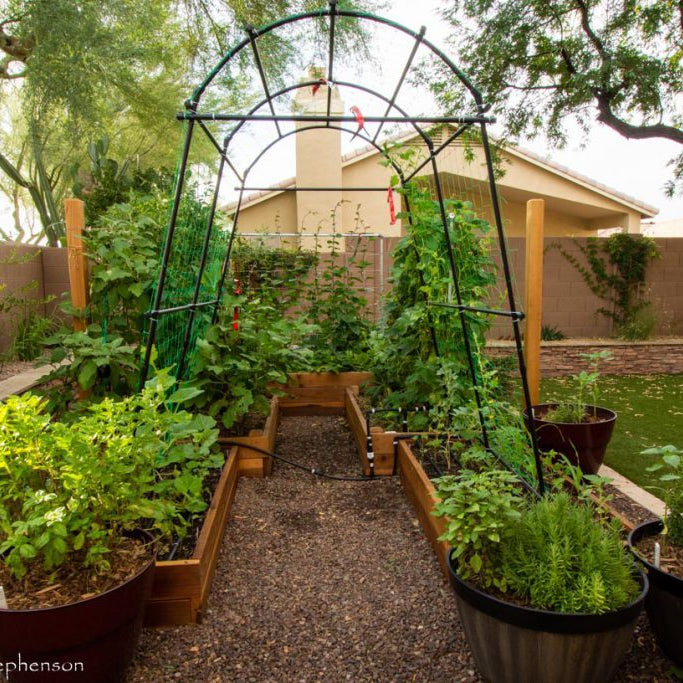
Available 24/7
Available 24/7

In our busy, fast-paced lives, we often forget to take a moment to relax and center ourselves. But there's a solution that has been around for centuries: the Zen garden. 🌱 Zen gardens, rooted in Japanese culture, are not just a form of landscaping; they are a pathway to achieving inner calm and tranquility. 🌸
Zen, which comes from the Japanese Mahayana Buddhist tradition, emphasizes meditation, intuition, and simplicity. It focuses on personal reflection rather than formal worship. When applied to gardens, this philosophy creates serene outdoor spaces that encourage mindfulness and peace. 🧘♂️
Creating a Zen garden is a wonderful way to achieve that peaceful state of mind. These gardens are adaptable to any size, so whether you're in a tiny apartment or have a spacious backyard, you can create a calming oasis that promotes relaxation and focus. 🏡
Zen gardens often incorporate natural elements like sand, rocks, and plants to replicate the essence of nature. 🌳 The act of raking sand or gravel in patterns has symbolic meaning, as it helps focus the mind and brings a sense of order to our wandering thoughts. 🌾
If you're ready to dive into the world of Zen gardening, here’s a beginner’s guide to help you create your very own peaceful space. 💆♀️
Zen gardens have their origins in Japanese Buddhist temples, dating back to the Muromachi period (1336-1573). 🏯 Initially designed for meditation and spiritual reflection, these gardens have evolved over time to become spaces that promote peace and tranquility. 🌸
Creating a Zen garden is not just about planting a few shrubs; it’s about designing a space that fosters relaxation, mindfulness, and connection to nature. 🌍 Whether you're creating a small corner garden or a larger outdoor oasis, here’s a step-by-step guide to help you get started. 💚
Step 1: Decide on the Perfect Location 🏞️
The first step in creating your Zen garden is choosing the right location. 🏠 Is it an indoor space or an outdoor sanctuary? Choose a quiet area where you can sit comfortably and meditate.
It should be free of distractions, allowing you to truly disconnect from the hustle and bustle of daily life. If you're designing an outdoor garden, look for a flat, serene spot in your yard or balcony. For an indoor garden, a cozy corner or a space near a window works best. 🌿
Once you’ve selected your space, visualize the size and layout of your garden. Consider whether it will be a small container garden or a larger outdoor setup. Taking rough measurements will help you plan and visualize your Zen space. 📏
Step 2: Follow Zen Principles for Your Design 🌑
Zen gardens are guided by seven core principles that will shape the design of your space. These principles include:
These principles are not just aesthetic choices but also reflections of Zen philosophy. By embracing them, you’ll create a space that invites relaxation and introspection. 🧘♀️
Step 3: Visualize Your Zen Garden 🖼️
Before you begin planting, take the time to sketch your Zen garden. ✏️ Whether you’re creating a large outdoor garden or a small indoor one, planning the layout helps visualize the final result. You can even hire a landscape designer if you're working with a bigger space or want more elaborate designs. 🌿
Sketch out where you want elements like rocks, sand, or plants. Pay attention to the flow of the space, ensuring there’s a sense of balance and tranquility in the layout. 🌳
Step 4: Embrace Simplicity and Invite Tranquility 🌱
A Zen garden is meant to be simple yet inviting. The minimalist approach allows the garden to have a calming, peaceful atmosphere. 🌸 Choose a muted color palette that reflects the natural world, such as earth tones or soft greens.
Don’t overcrowd the space with too many elements. Instead, focus on the few features that will enhance the overall atmosphere. 🎨
Remember, your garden should reflect your personal sense of peace. Choose elements that resonate with you, whether that’s a certain type of rock, a plant, or even a water feature. 🌿
Step 5: Select the Right Materials 🌍
The materials you choose are integral to your Zen garden’s overall aesthetic. Zen gardens often incorporate a variety of natural elements, including:
It’s essential to choose materials that resonate with your space, whether you want to focus more on plants or use rocks and sand to create striking patterns. 🪴
Step 6: Choose Zen Garden Elements Carefully 🌟
Zen gardens typically include elements like rocks, sand, water, and minimal plants. These elements come together to create a harmonious, balanced space. Here’s a closer look at the essential components:
1. Rocks: Rocks are one of the most important elements in Zen gardens. 🪨 They symbolize natural forces and the eternal, unchanging elements of nature. The placement of rocks should be done thoughtfully, as they often serve as focal points in the garden.
2. Gravel/Sand: Gravel and sand are used to create patterns that represent the flow of water. 🌊 These patterns can be simple lines or intricate whirls, and raking them is often part of the meditative process. Gravel also offers a tactile element that enhances the sensory experience.
3. Privacy and Enclosure: Zen gardens often need to be enclosed to maintain a sense of privacy and tranquility. 🌿 Use hedges, bamboo screens, or other natural materials to create a sense of seclusion in your garden space.
4. Plants: Plants in Zen gardens are usually low-maintenance and sparse. 🍃 Bonsai trees, bamboo, ferns, and mosses work beautifully in Zen gardens, adding natural beauty and a touch of greenery without overpowering the design. 🌿
5. Water: Water features, such as small fountains or ponds, can add an extra element of serenity. 💧 The sound of flowing water brings peace and is believed to have calming effects, making it a perfect addition to any Zen garden.
Step 7: Create a Pathway and Seating Area 🪑
Zen gardens are places for reflection and meditation. 🧘♀️ To enhance the experience, create a pathway that invites you to wander through your garden.
Use stepping stones or pavers to lead you through the space without disturbing the delicate balance of the garden. You can also add a seating area, such as a stone bench or comfortable chair, to sit and enjoy the peaceful atmosphere. 🪑
Step 8: Add Soft Lighting and Focal Points 🌟
Lighting can transform the mood of your Zen garden, especially in the evening. 🕯️ Use soft outdoor lights to highlight key features of the garden, such as plants, rocks, or pathways. The play of light and shadow enhances the peaceful atmosphere and makes your garden even more inviting at night. 🌙
By following these steps, you can create a Zen garden that not only enhances the beauty of your space but also promotes relaxation, focus, and mindfulness. 🧘♂️ Ready to create your own peaceful retreat? Explore our selection of Zen garden essentials and get started today! 🌿
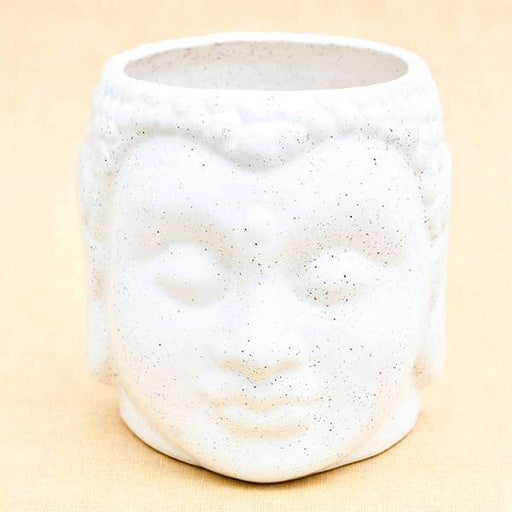
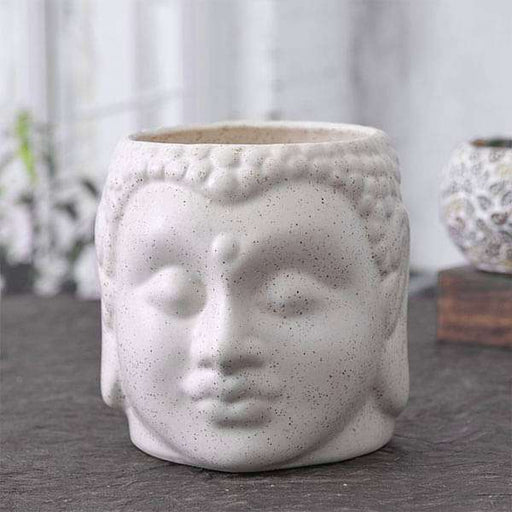 Sold out
Sold out
4.3 Inch (11 cm) Buddha Marble Finish Ceramic Pot (White) - Set of 2 Elevate your home decor with our exquisite 4.3 inch Buddha Marble Fin...
View full details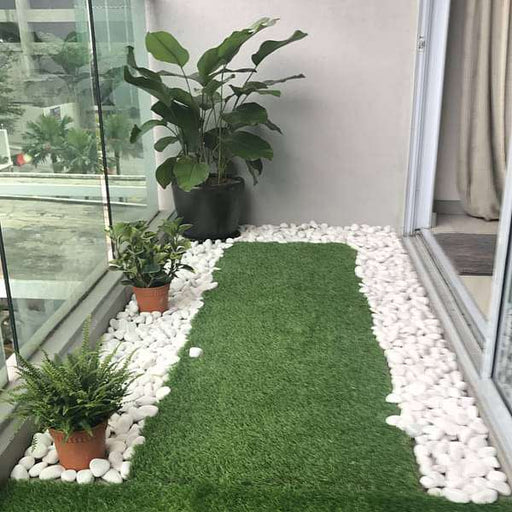
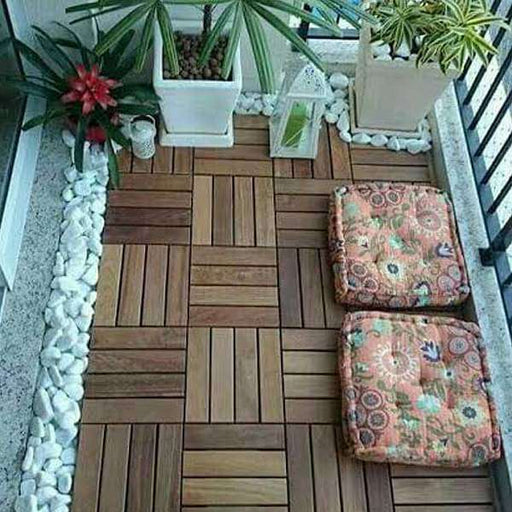 Sold out
Sold out
Beautify Balcony Edges with White Pebbles Transform your outdoor space with our exquisite Super Marble Pebbles in a stunning white hue. Ea...
View full details
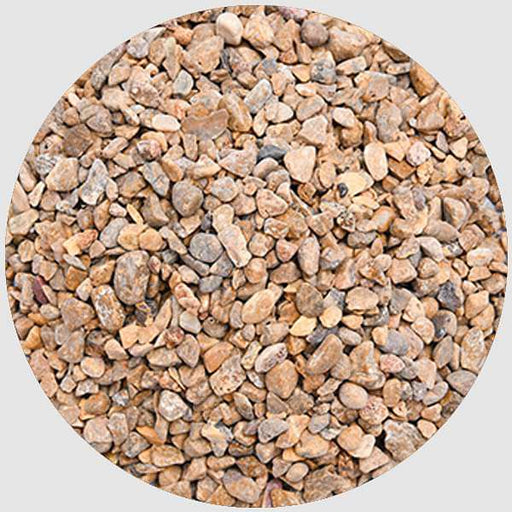 Sold out
Sold out
Chips Pebbles (Brown, Small, Polished) - 1 kg Transform your space with our exquisite Chips Pebbles in a rich brown hue. Each small, polis...
View full details
 Save 20%
Save 20%
Chips Pebbles (Black, Small, Polished) - 1 kg Transform your space with our exquisite Chips Pebbles in a stunning black hue. Each small, p...
View full details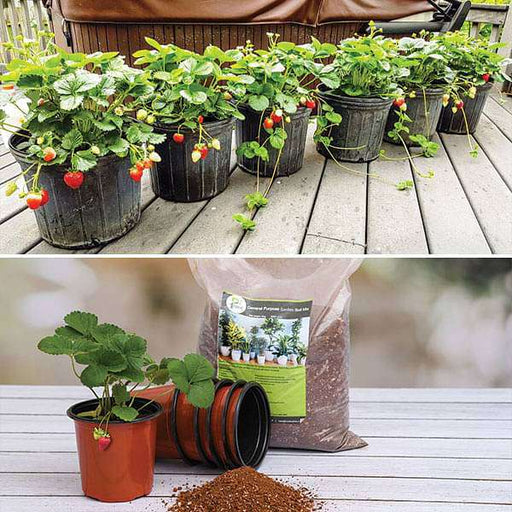
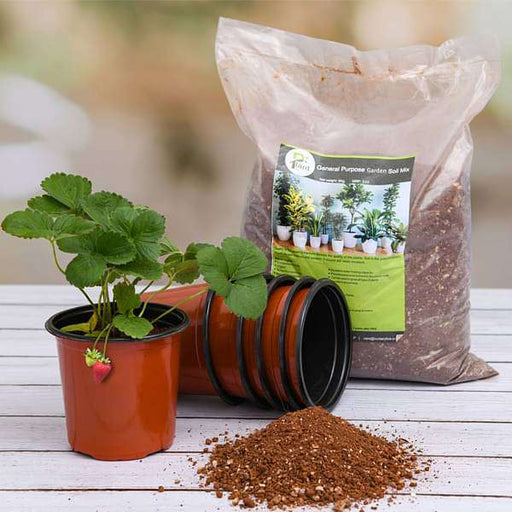 Save 62%
Save 62%
Strawberry Gardening Kit Transform your garden into a berry paradise with our Strawberry Gardening Kit! This all-in-one kit includes every...
View full details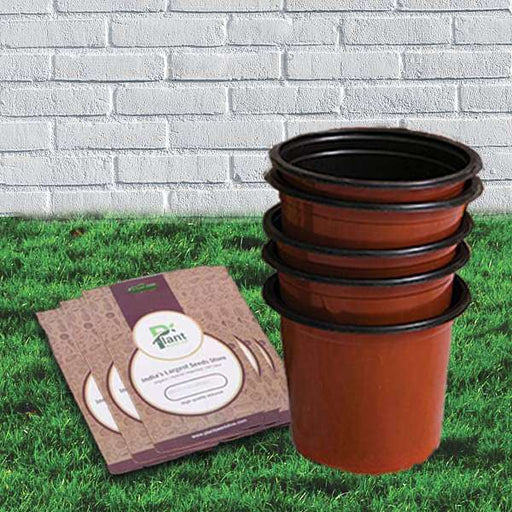
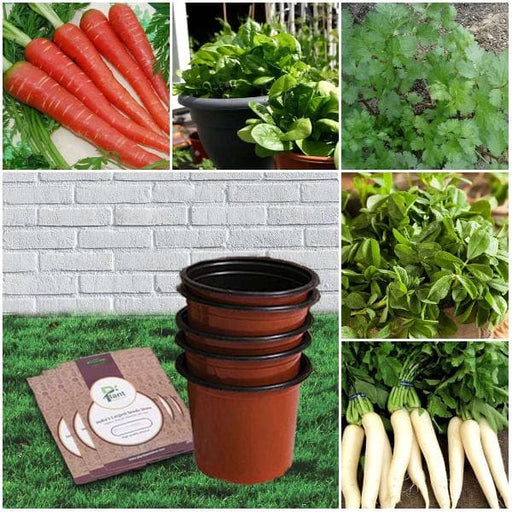 Save 41%
Save 41%
Healthy Vegetable Grown at Home (Seeds with Pots) - Kitchen Garden Pack Transform your kitchen into a vibrant oasis with our Healthy Veget...
View full details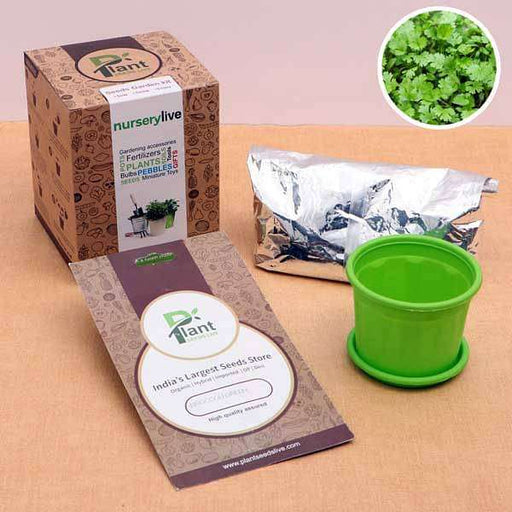
Easy to Grow Coriander Seeds - Garden Pack Transform your garden into a fragrant herb haven with our Easy to Grow Coriander Seeds. Known s...
View full details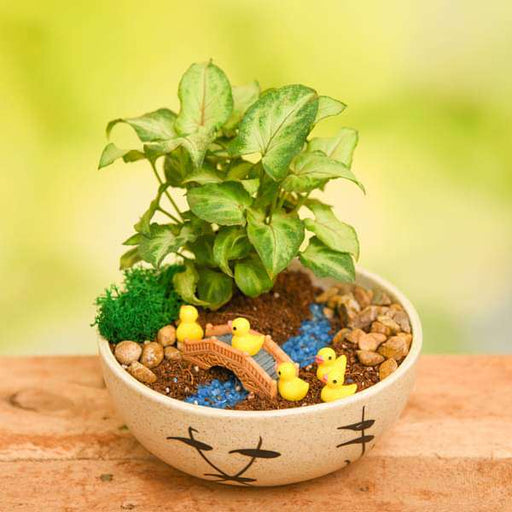
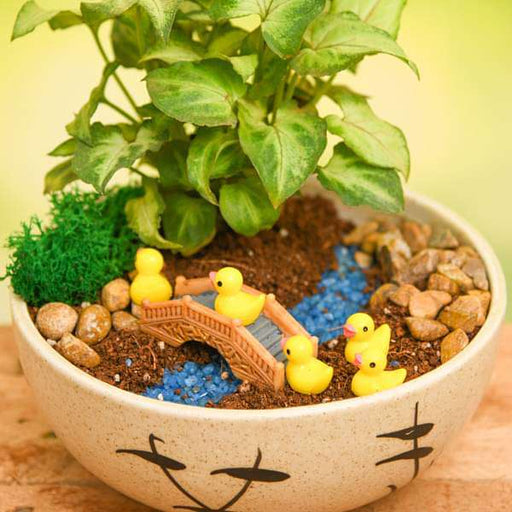 Sold out
Sold out
DIY River Crossing Ducklings - Miniature Garden Transform your indoor space into a whimsical oasis with our DIY River Crossing Ducklings M...
View full details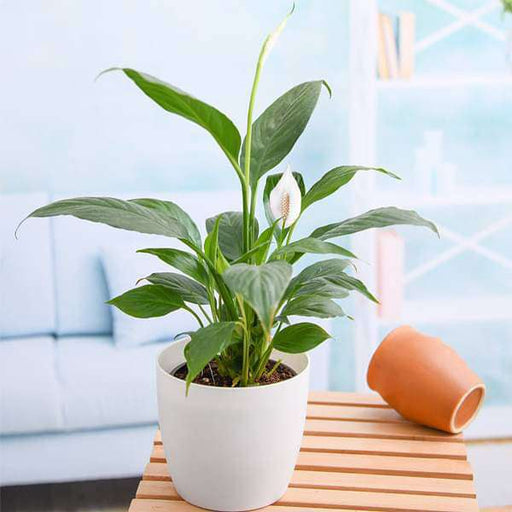
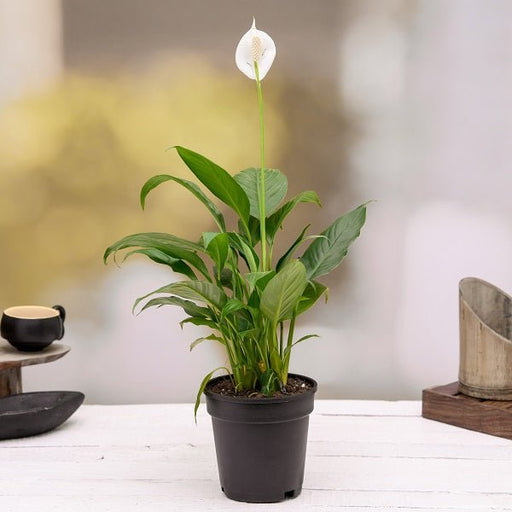 Save up to 15%
Save up to 15%
Peace Lily, Spathiphyllum - Plant The Peace Lily, scientifically known as Spathiphyllum, is a stunning houseplant celebrated for its elegant white...
View full details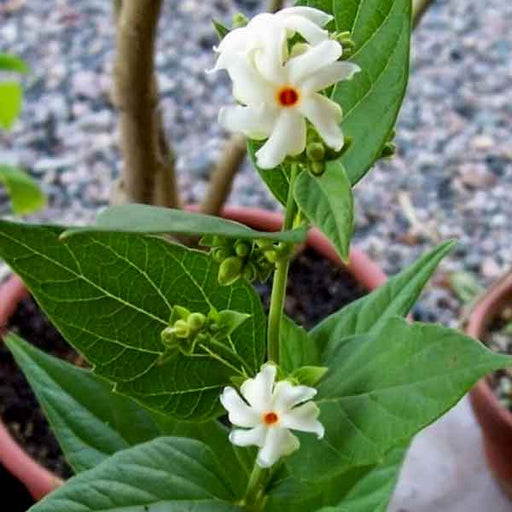
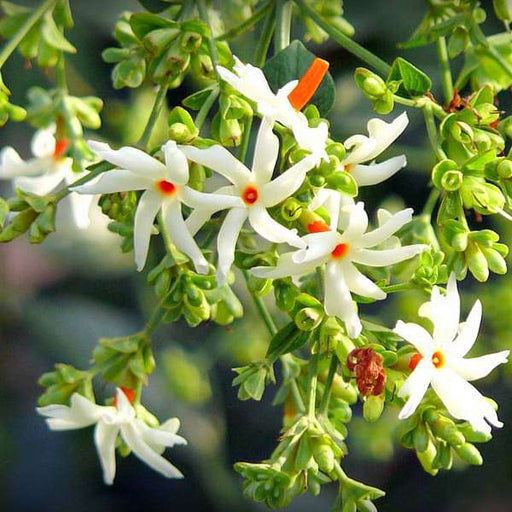 Save 18%
Save 18%
Combo Constituents Includes the Parijat Tree (Night-Flowering Jasmine), a culturally significant plant with fragrant flowers. Description The Pari...
View full details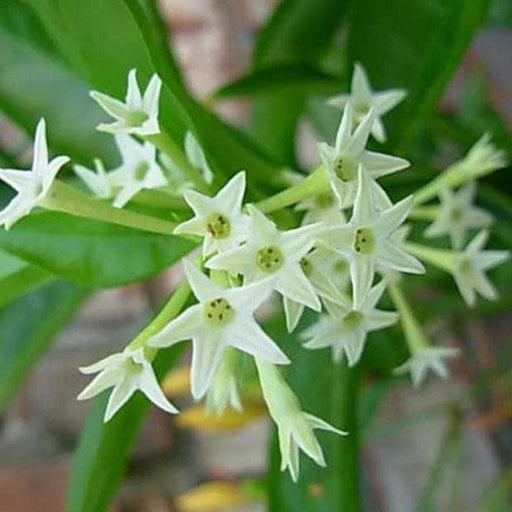
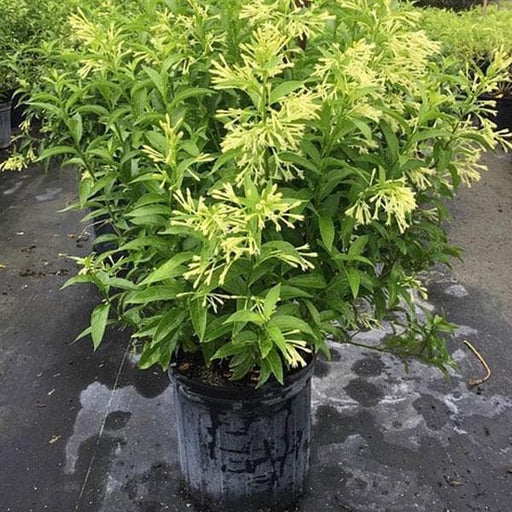 Save 25%
Save 25%
Description Raat Ki Rani (*Cestrum nocturnum*), also known as Night Blooming Jasmine, is a fragrant shrub native to the Caribbean and Central Ameri...
View full details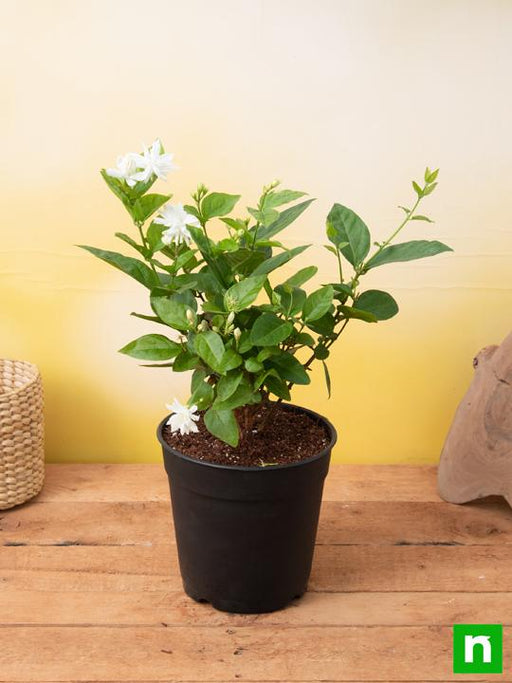
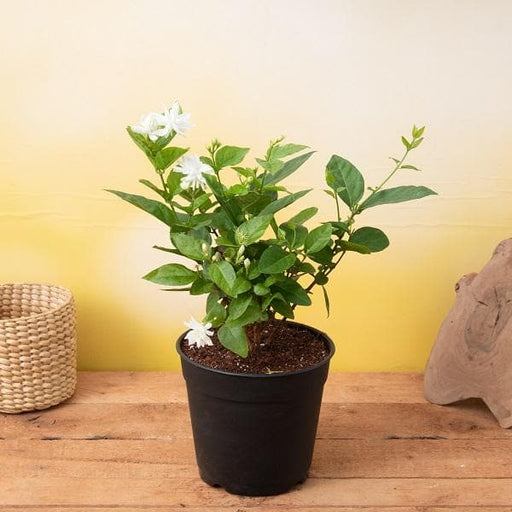 Save 25%
Save 25%
Jasminum sambac, Mogra, Arabian Jasmine - Plant Jasminum sambac, commonly known as Mogra or Arabian Jasmine, is a fragrant flowering plant...
View full details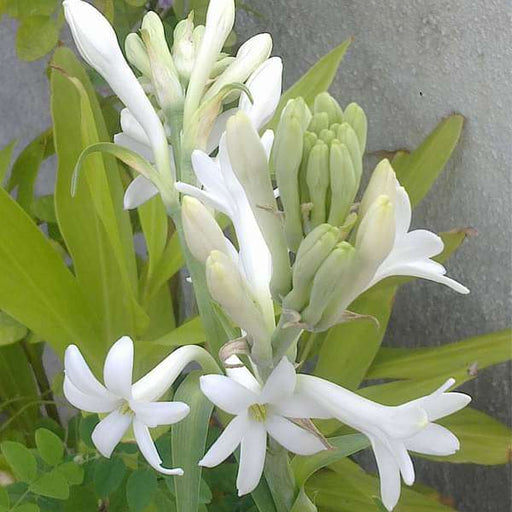
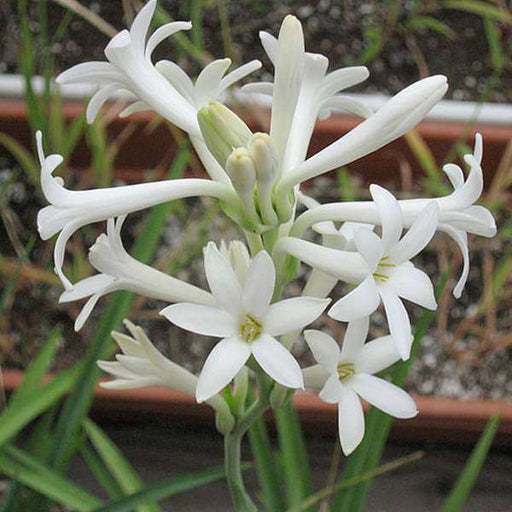 Save 17%
Save 17%
Rajnigandha, Tuberose - Plant The Rajnigandha, scientifically known as Polianthes tuberosa, is a captivating perennial plant renowned for ...
View full details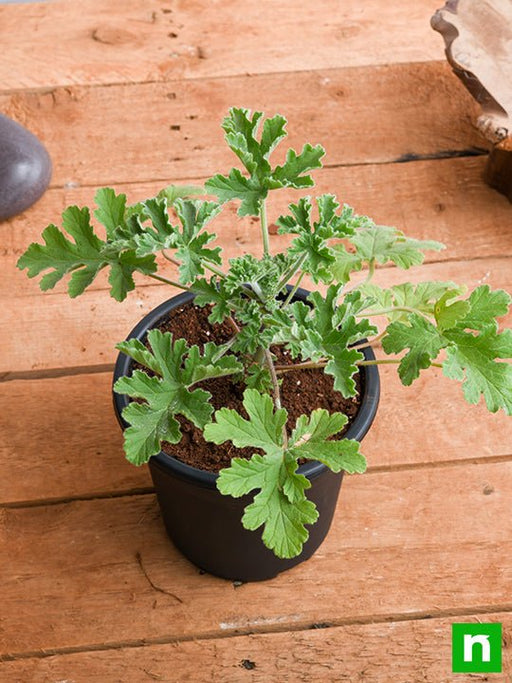
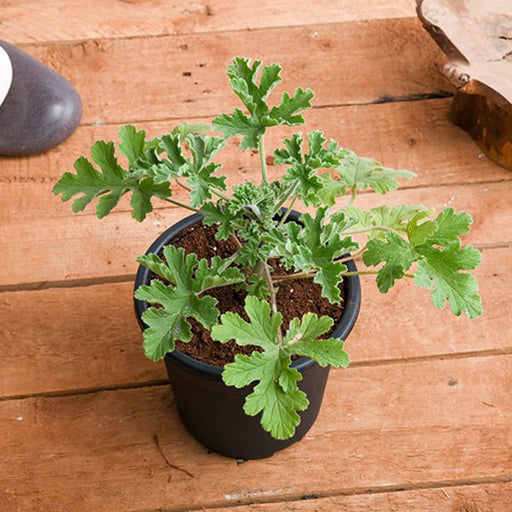 Sold out
Sold out
Citronella, Odomas - Plant The Citronella plant, scientifically known as Cymbopogon nardus, is a tropical grass renowned for its aromatic ...
View full details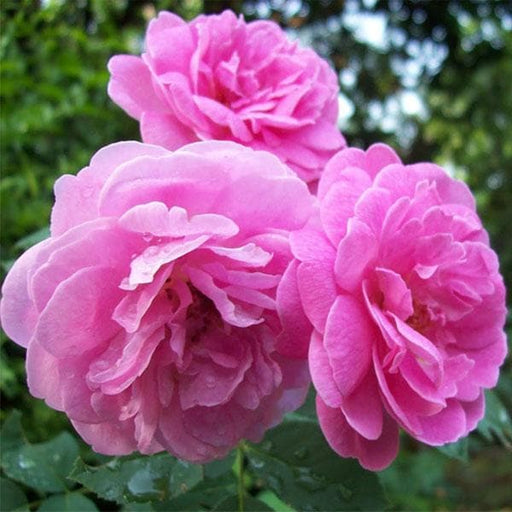 Save 25%
Save 25%
Damascus Rose, Scented Rose (Any Color) - Plant The Damascus Rose, also known as Rosa damascena, is a timeless symbol of beauty and romanc...
View full details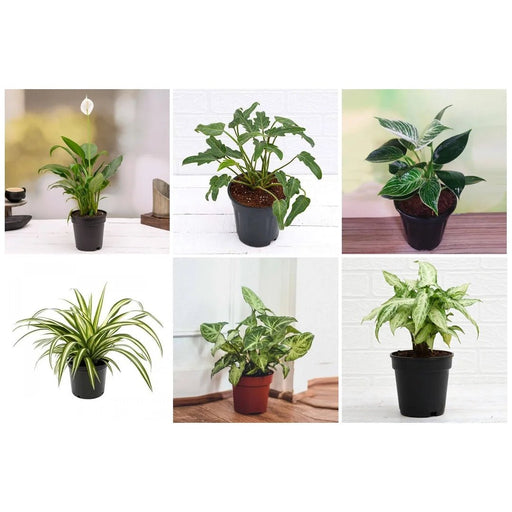
 Save 35%
Save 35%
Best 6 Plants for Perfect Indoor Garden Transform your living space into a lush oasis with our curated collection of the Best 6 Plants for a...
View full details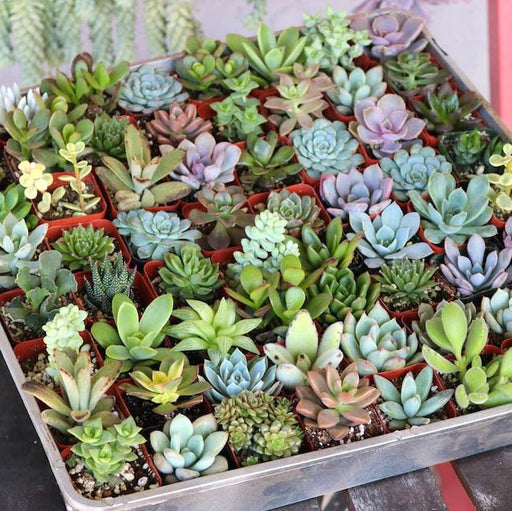
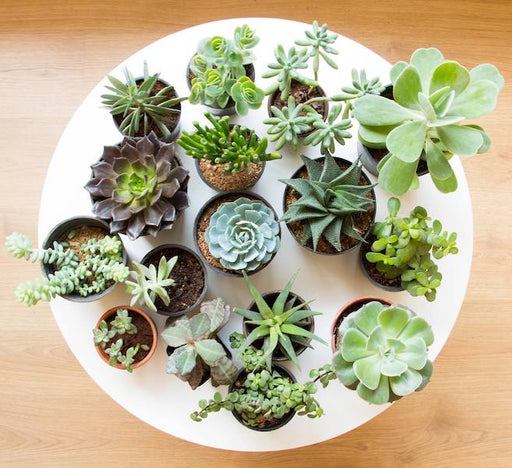 Save up to 50%
Save up to 50%
Mini Succulent Garden Pack Transform your space with our Mini Succulent Garden Pack, featuring a delightful collection of 4 any variety beautiful s...
View full details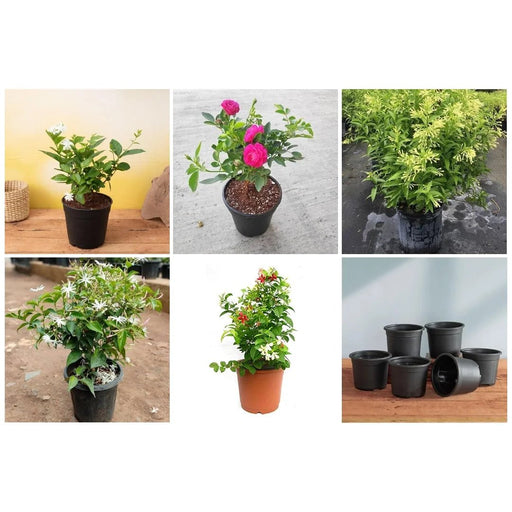
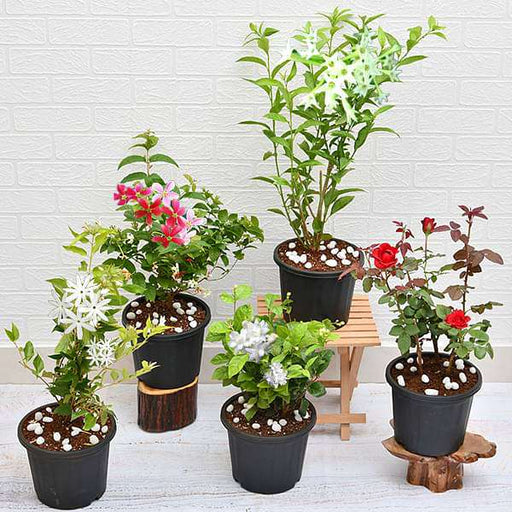 Save 30%
Save 30%
5 Best Fragrant Plants Transform your garden or indoor space into a fragrant paradise with our curated selection of the 5 Best Fragrant Plants. Th...
View full details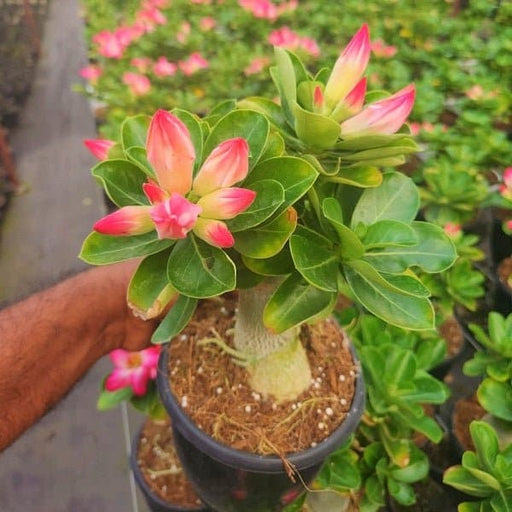
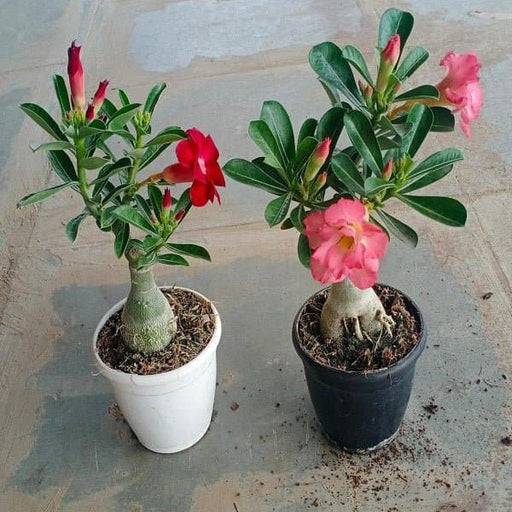 Save 24%
Save 24%
Set of 2 Bonsai Looking Grafted Adeniums Transform your indoor or outdoor space with our exquisite Set of 2 Bonsai Looking Grafted Adenium...
View full details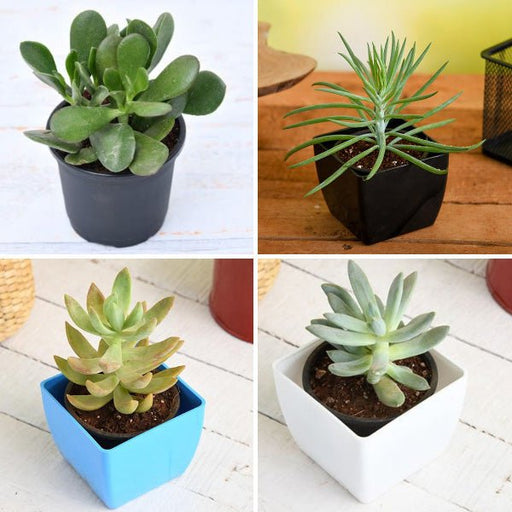 Save 45%
Save 45%
Top 4 Die Hard Succulents Pack Transform your indoor or outdoor space with our Top 4 Die Hard Succulents Pack, featuring a curated selecti...
View full details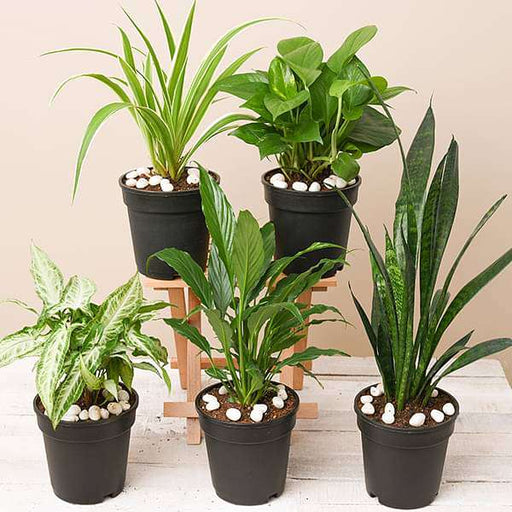
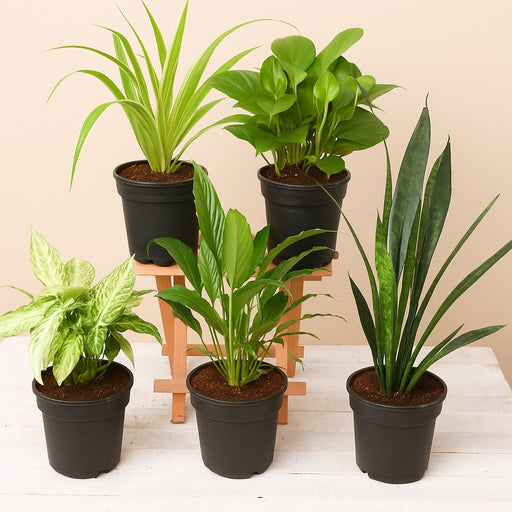 Save 30%
Save 30%
5 Best Indoor Plants Pack Transform your living space into a lush oasis with our '5 Best Indoor Plants Pack.' This carefully curated collection fe...
View full details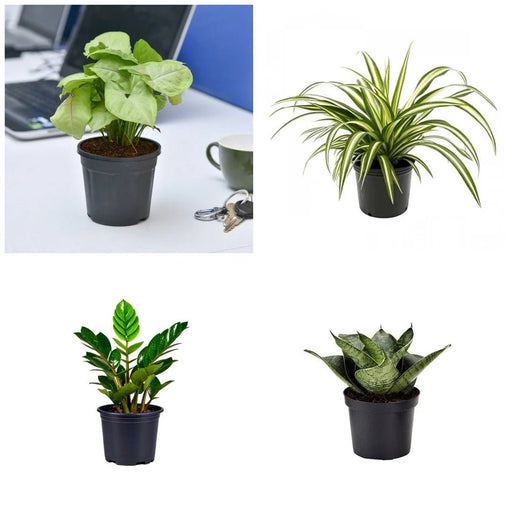
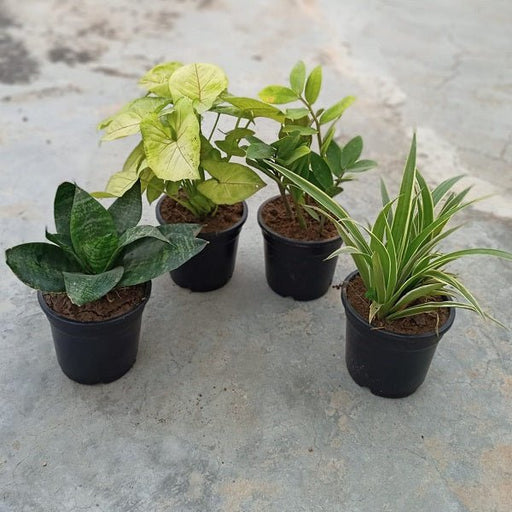 Save 25%
Save 25%
Set of 4 Evergreen Air Purifier Plant Pack Transform your indoor space into a lush, green oasis with our Set of 4 Evergreen Air Purifier Pla...
View full details
Leave a comment